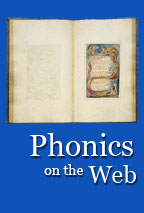Dyslexia is a learning disability characterized by difficulty in the use and processing of linguistic codes, including alphabetic letters representing speech sounds. Such difficulty is reflected in spoken language, written language, and language comprehension.
Children and adults with dyslexia typically fail to master the basic elements of language despite traditional classroom teaching. Since language is the foundation for subsequent academic learning, people with dyslexia often encounter difficulty in all educational endeavors.
Treating Dyslexia
The use of an intensive, systematic phonics approach by a skilled teacher can significantly moderate language learning and processing problems caused by dyslexia. If used early enough and by qualified practitioners, such an approach has every likelihood of eliminating the emergence of notable reading and writing problems.
While a good phonics approach will help a student overcome the challenges of dyslexia, there is no quick fix. It can take one to three years to get a dyslexic student reading and spelling at grade level.
It is best to seek help as early as possible. While older children and adults can be helped with reading, those beyond third grade require much more intensive help. The following statistics1 may help illuminate why early intervention is important:
- 90 percent of children with reading difficulties will achieve grade level in reading if they receive help by the first grade.
- 75 percent of children whose help is delayed to age nine or later continue to struggle throughout their school careers.
- If help is given in fourth grade, rather than in late kindergarten, it takes four times as long to improve the same skills by the same amount.
1 Susan Hall, Is It a Reading Disorder or Developmental Lag?, 2001
Looking for L-Serine powder? Try my other website, Sterling Supplements.




 Dyslexia
Dyslexia
